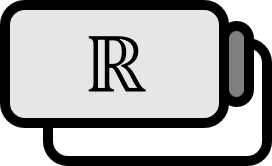The set of real numbers and the empty set are both open and closed.
Theorem
$\mathbb{R}$ and $\emptyset$ are both open and closed.
Description
On the set of real numbers $\mathbb{R}$, the union of multiple intervals is called an open set. For example, $(-1,0) \cup (2,3)$ is obviously an open set, and so are $(0,1)$ and $\mathbb{R}$. Meanwhile, being closed is defined through being open. For any subset of real numbers $C$, if $R \setminus C$ is open, then $C$ is called a closed set. As already mentioned in the given theorem, being open and being closed are not mutually exclusive. Therefore, ‘open’ does not mean ’not closed,’ and likewise, ‘closed’ does not mean ’not open.’ The fact that these two states overlap in both the set of real numbers and the empty set is quite an interesting story.
Proof
Part 1. $\mathbb{R}$ and $\emptyset$ are open sets
$\mathbb{R} = (- \infty , \infty)$ can be represented as $\displaystyle \bigcup_{n \in \mathbb{Z}} (n-1,n+1) = ( - \infty , \infty)$, therefore it’s an open set.
$$ \displaystyle \bigcup_{\alpha \in \emptyset} A_{\alpha} = \emptyset $$
The empty set is the union of $0$ intervals, so by definition, it is known to be an open set. [ NOTE: If the tautology is not satisfying or clear, consider for some real number $x \in \mathbb{R}$ that $(x,x) = \emptyset$. ]
Part 2. $\mathbb{R}$ and $\emptyset$ are closed sets
Since $\emptyset = \mathbb{R} \setminus \mathbb{R}$ is open, $\mathbb{R}$ is closed.
Since $\mathbb{R} = \mathbb{R} \setminus \emptyset$ is open, $\emptyset$ is also closed.
■
Corollary
$\mathbb{R^n}$ and $\emptyset$ are both open and closed.
Meanwhile, this theorem also holds when the whole space is given as $\mathbb{R}^{n}$.
